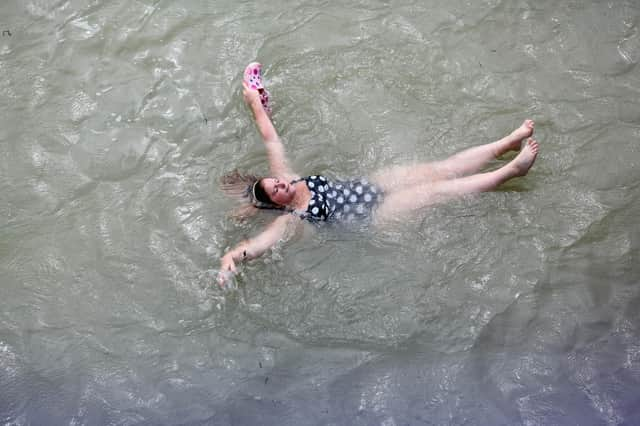Bathing beaches can be swimming in sewage without this showing up in official results – Dr Richard Dixon


The European Bathing Waters Directive was agreed in 1976 and required countries to monitor the quality of water at places where people regularly swim, and to improve those levels if they were not good enough.
Initially the UK decided that there were only 27 places in the whole of the UK where significant numbers of people regularly swam but, after some ridicule, had to concede that there were in fact hundreds.
Advertisement
Hide AdAdvertisement
Hide AdIn Scotland the number was set at 23 in 1987 and it stayed that way until a ‘Hidden Beaches’ campaign in the late 1990s from Friends of the Earth forced a review.
I was part of the government’s review panel that considered evidence from around Scotland and increased the number of official beaches to 60. I joined Lord Sewel at the glamorous Joppa sewage pumping station to make the announcement and have thought of him as Lord Sewage ever since.
Over the years, this number has slowly grown to 87. They range from Machrihanish in the west and Dunnet Bay in the north to Rockcliffe in the south and Eyemouth in the east, plus freshwater bathing waters at Dores on Loch Ness and Luss on Loch Lomond. And there are still other locations making bids to be included.
The latest revision of the European rules looks at bacteria from the human gut and requires monitoring in the official bathing season, which in Scotland is defined as June 1 to September 15.
There has been a big effort to clean up our beaches, with action plans for each problem location and ‘poor’ ratings falling from 15 in 2015 to just one last year.
Fisherrow Sands between Joppa and Musselburgh failed five years in a row because of sewage overflow during heavy rain and is no longer an official beach. Dhoon Bay in Dumfries and Galloway has been classified as poor in five of the last six years, but there is no data for 2020 because of Covid, which means it probably escapes being removed from the list of official beaches.
Where there is still a problem, this is usually due to combined sewer overflows discharging mixed sewage and street water into rivers and burns during heavy rainfall. These are the safety valves of the waste water system, a cheap and nasty way of making sure that sewage treatment works do not get overwhelmed.
However, the bathing-water legislation lets the regulator discount high bacteria readings if they are due to exceptional circumstances – like very heavy rain. This means that some beaches can be regularly affected by sewage overflows but this will not necessarily show up in the official results.
Advertisement
Hide AdAdvertisement
Hide AdClimate change is generally increasing the frequency of spells of very heavy rainfall. I remember pointing out to the government in the late 1990s that new sewage schemes were being designed to overflow up to twice during the bathing season but climate change would mean that would become many more times a year. Nobody listened, which means failure is built into the system.
Dr Richard Dixon is an environmental campaigner and consultant
Comments
Want to join the conversation? Please or to comment on this article.
